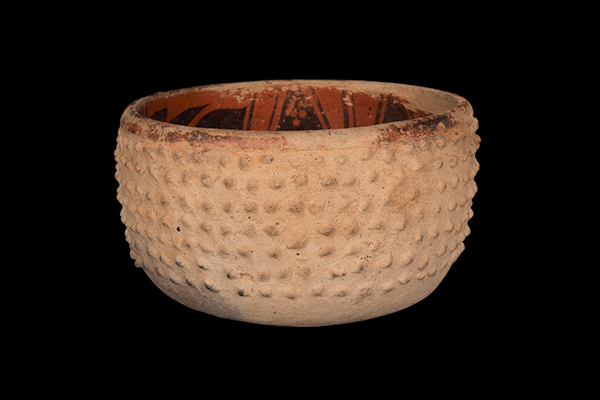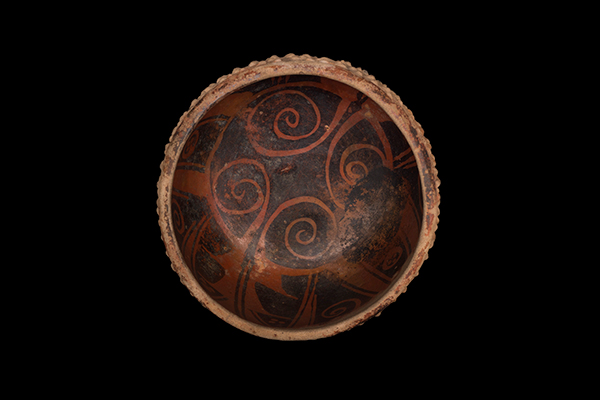Host Piece for december, january and february
Archeology Collection
Lobby


Región arqueológica Calima, Alto Cauca
Cuenco
200 a. C.-1200 d. C. (cronología relativa)
Cerámica
9 x 16 (diámetro) cm
Cód. ICANH 49-A-49
Instituto Colombiano de Antropología e Historia, ICANH
Shamanism, Art, and Geometry
Three Infinite Worlds in One Bowl
For more than 3,200 years before the arrival of Europeans, sedentary groups were present in the ancient rain forests of the Calima archaeological region, located in the upper Valle del Cauca. Archaeological studies have divided this long sequence of occupation into three major periods, each one marking a series of social and cultural changes: the llama period (1600 BC-200 BC), the Yotoco period (200 BC-1200 AD) and the Sonso period (1200 AD-1600 AD). The plants and animals on riverbanks throughout this territory significantly attracted the attention of the ancient settlers, who represented their characteristics in their pottery.
On the outer surface of this light brown bowl, a Yotoco potter left the impression, in the form of conical volutes fashioned from clay, of the textures of the rough, bumpy skin of a type of poisonous toad, of the Bufo genus, whose skin glands secrete an irritant substance that serves as a potent hallucinogen. The inner surface of this bowl contains a negative painting of curvilinear and triangular geometric motifs in black on a base of reddish slip. Both styles characterize the mastery of the elegant and specialized ceramics of the Yotoco period, in which strong tones on smooth surfaces contrast with the soft colors of its corrugated shapes.
This bowl, today part of the patrimonial heritage of the Colombian Institute of Anthropology and History, and of all Colombians, was found in the mortuary chamber of an individual of singular importance for the community. This object's formal and stylistic characteristics have been found in other toad-shaped vessels as well, which indicates that, during this period, there were shamanic activities that involved the intake of entheogens to enter into altered states of consciousness and induce visions and hallucinations. These animals have also been depicted on the oldest ceramics from the previous Ilama period.